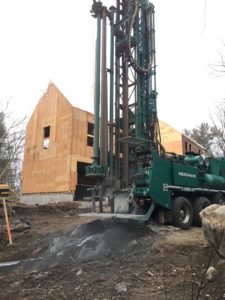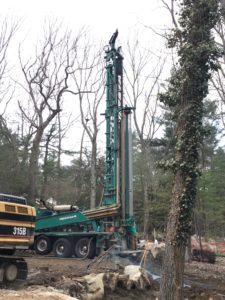As the house construction continues apace, we’re also doing site work so we can install the driveway, finish grading, and move onto landscaping this summer. We need to move many of the large boulders on site (some of them will be used for soil retention), and we also need to drill a well.
One of our goals in the Highland project is to design a house that minimizes water consumption. On the inside, we’re using low-consumption plumbing fixtures (toilets, faucets, and shower heads) that comply with the EPA’s WaterSense program. Outside, we’re making extensive use of native and adapted plants for the landscaping, because they are suited to this climate and can generally survive on existing rainfall. We’re also introducing a special low-water grass for the lawn (Pearl’s Premium). Still, there will be times when there isn’t sufficient rainfall and we will need to provide a source of water for irrigation.
Weston prohibits irrigation systems from using municipal water, so our options were to either use our extensive storm water management system to fill a storage tank, or to drill a well. We chose the well because an underground cistern large enough to reliably provide water all season would be very challenging to fit onto the site without interfering with the septic and drainage systems and underground utilities. Our storm water management system is designed to capture 100% of the runoff from all the impervious surfaces on the property (roof, driveway, and patios) and return it to the aquifer, and the well will tap into that aquifer to help maintain the home’s landscaping when natural rainfall is inadequate. Here are some photos of the drilling rig in action.




